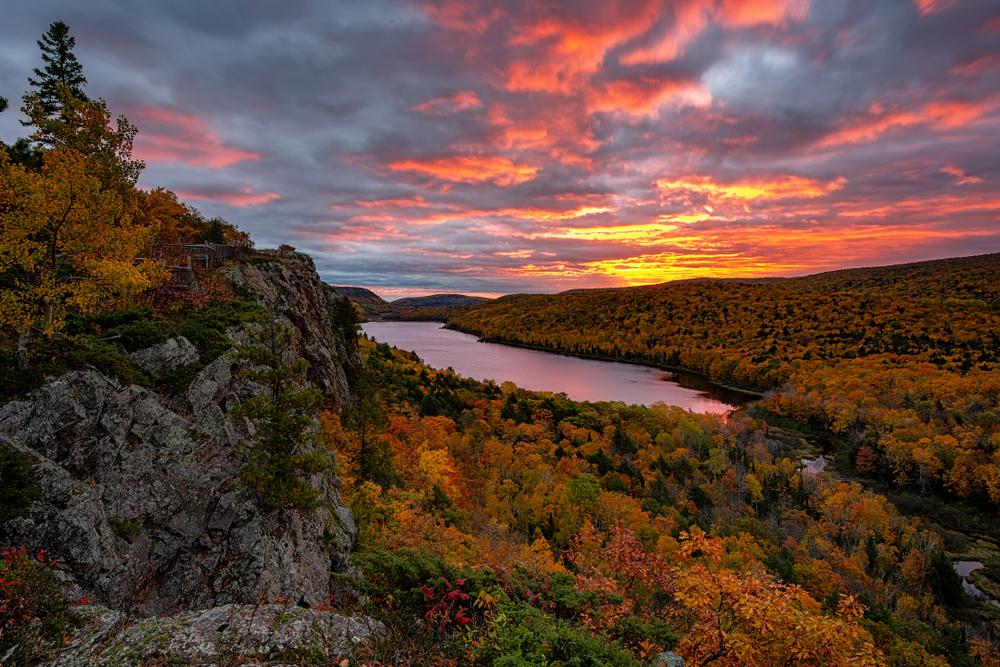The sunset smolders to embers on the horizon and a mild wind pushes waves off Lake Superior into shore where we sit watching the light show finish up and the stars take over. The temperature will dip toward 50 or lower tonight, but the fall air is more invigorating than biting, and a good meal around the campfire—some reheated local pasties in a cast-iron pan—warms our insides before we head to our sleeping bags in the tent.
The soughing wind through the treetops is white noise and the day rests here at the Porcupine Mountains Wilderness State Park.





